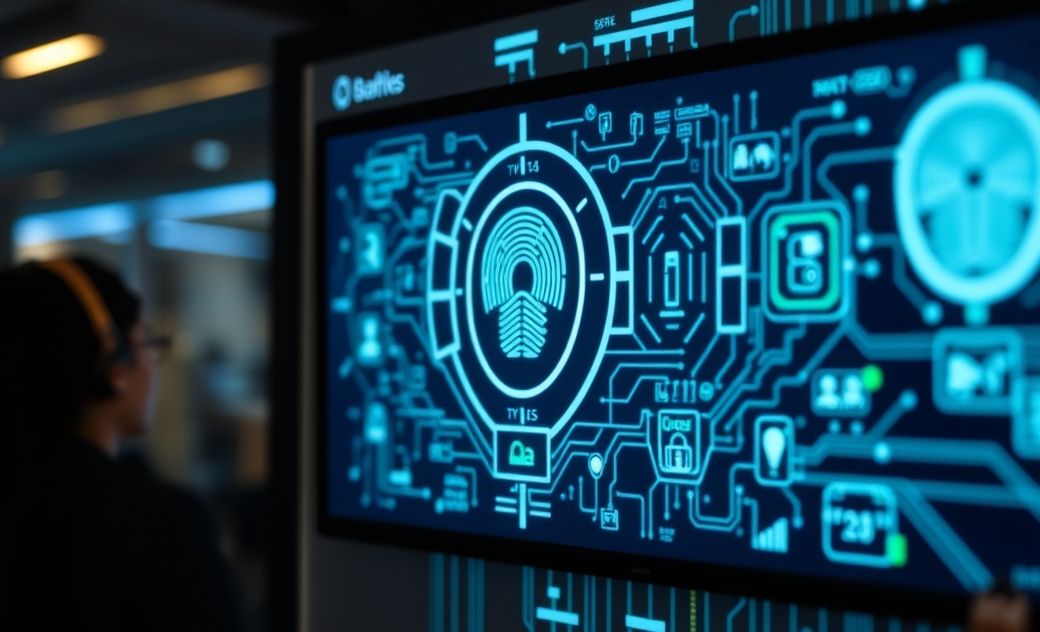The digital world is constantly evolving, with new technologies emerging to enhance security measures. One such innovation capturing the attention of both individuals and enterprises is biometric authentication systems. These systems are becoming increasingly popular and are set to redefine the landscape of cybersecurity. Let’s delve deeper into this trend and explore how it is shaping the future of data protection.
Understanding Biometric Authentication
Biometric authentication refers to the process of verifying an individual’s identity based on their unique biological traits. Traditional methods like passwords and PINs are becoming obsolete due to their vulnerability to breaches and theft. In contrast, biometric methods rely on characteristics that are much harder to replicate or steal, thereby offering a more secure alternative.
Types of Biometric Authentication
There are various types of biometric authentication systems, each utilizing different human attributes:
- Fingerprint Recognition: This is the most widely used biometric system, relying on the unique patterns of an individual’s fingerprints to authenticate identity.
- Facial Recognition: By analyzing facial features, these systems can verify identity, often used in smartphones and other smart devices.
- Iris and Retina Scanning: These methods involve scanning the intricate patterns in the iris or retina, offering a high level of security due to their complexity.
- Voice Recognition: This system identifies individuals by analyzing their voice patterns, ensuring secure access through voice commands.
- Behavioral Biometrics: A newer form, this method assesses movements and behaviors such as typing patterns or mobile interactions.
The Advantages of Biometric Systems
Biometric authentication systems offer numerous advantages over conventional security methods, making them an attractive choice for enhanced cybersecurity:
Enhanced Security
The primary advantage is heightened security. Biometric data is unique to each individual and is much more difficult to forge compared to passwords, which can often be guessed or hacked.
User Convenience
Biometric systems simplify the authentication process. Users no longer need to remember complex passwords or carry additional security tokens. Quick and easy access through biometric confirmation boosts user convenience significantly.
Fraud Reduction
Biometric systems greatly minimize the risk of identity theft and unauthorized access. Since these systems rely on unique biological traits, they provide a robust defense against fraudulent activities.
Challenges and Considerations
Despite the advantages, the adoption of biometric systems also presents certain challenges and considerations that need to be addressed.
Privacy Concerns
Biometric data is sensitive and personal, raising concerns over privacy and data protection. Effective measures must be in place to ensure that biometric information is secure and not misused.
Technical Limitations
Some biometric systems can face issues with accuracy due to environmental factors or technical limitations, leading to false positives or negatives. Continuous improvements and updates are necessary to enhance reliability.
Implementation Costs
Integrating biometric authentication systems can involve significant upfront costs for both hardware and software. Organizations must weigh these costs against the potential benefits to make informed decisions.
The Future of Biometric Authentication in Cybersecurity
As technology continues to develop, biometric authentication systems are expected to play an increasingly vital role in securing digital environments. With the rise of IoT devices, smart homes, and connected systems, the need for robust security measures becomes even more critical. Biometric systems provide the means for safer, more secure interactions across various platforms, ensuring data integrity and user protection.
In conclusion, the rise of biometric authentication systems marks a significant shift in the cybersecurity landscape. By offering enhanced security, convenience, and fraud reduction, these systems are well-poised to become a cornerstone of digital security strategies.








Leave a Reply